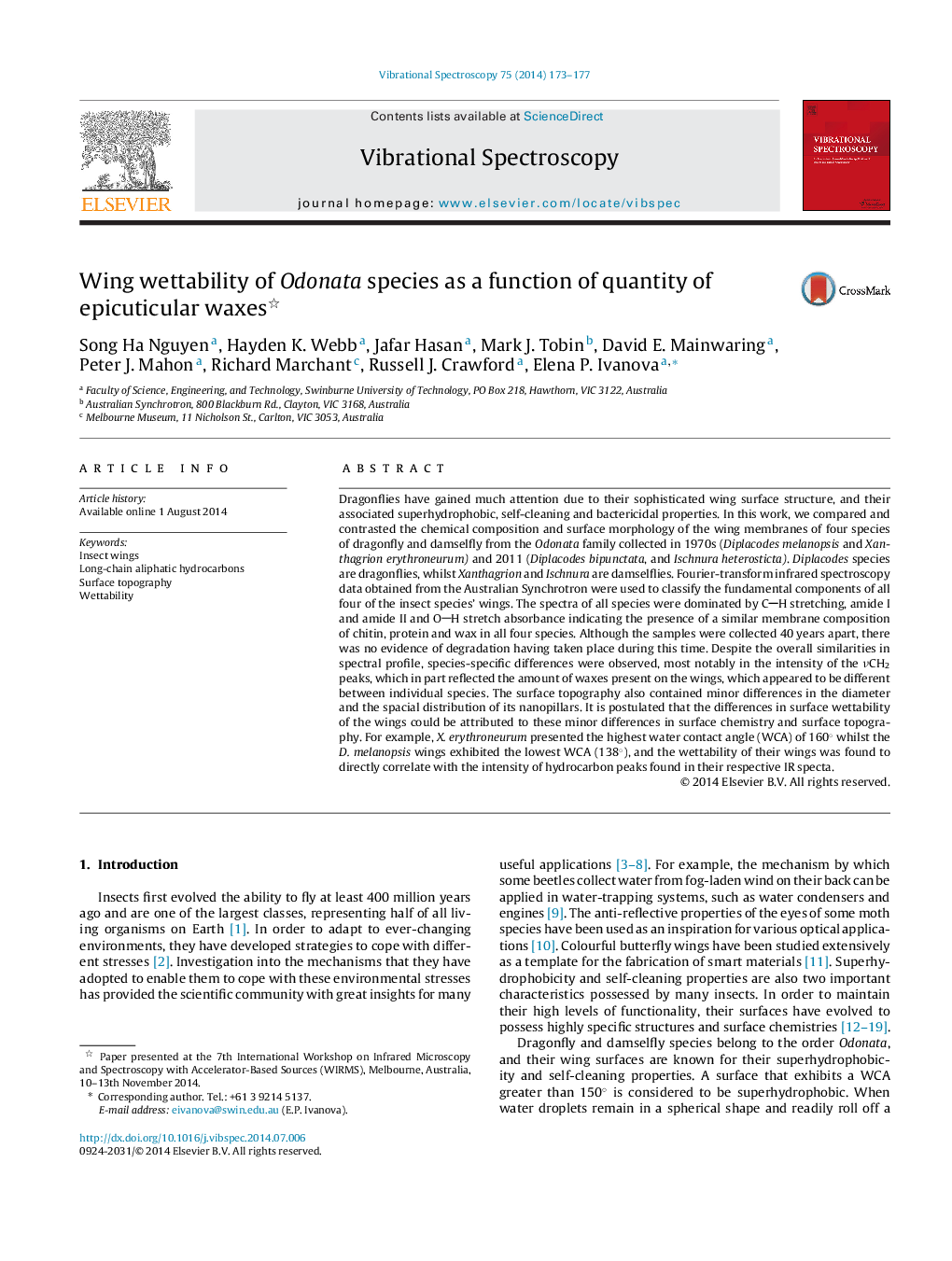| کد مقاله | کد نشریه | سال انتشار | مقاله انگلیسی | نسخه تمام متن |
|---|---|---|---|---|
| 1249890 | 1495984 | 2014 | 5 صفحه PDF | دانلود رایگان |

Dragonflies have gained much attention due to their sophisticated wing surface structure, and their associated superhydrophobic, self-cleaning and bactericidal properties. In this work, we compared and contrasted the chemical composition and surface morphology of the wing membranes of four species of dragonfly and damselfly from the Odonata family collected in 1970s (Diplacodes melanopsis and Xanthagrion erythroneurum) and 2011 (Diplacodes bipunctata, and Ischnura heterosticta). Diplacodes species are dragonflies, whilst Xanthagrion and Ischnura are damselflies. Fourier-transform infrared spectroscopy data obtained from the Australian Synchrotron were used to classify the fundamental components of all four of the insect species’ wings. The spectra of all species were dominated by CH stretching, amide I and amide II and OH stretch absorbance indicating the presence of a similar membrane composition of chitin, protein and wax in all four species. Although the samples were collected 40 years apart, there was no evidence of degradation having taken place during this time. Despite the overall similarities in spectral profile, species-specific differences were observed, most notably in the intensity of the νCH2 peaks, which in part reflected the amount of waxes present on the wings, which appeared to be different between individual species. The surface topography also contained minor differences in the diameter and the spacial distribution of its nanopillars. It is postulated that the differences in surface wettability of the wings could be attributed to these minor differences in surface chemistry and surface topography. For example, X. erythroneurum presented the highest water contact angle (WCA) of 160° whilst the D. melanopsis wings exhibited the lowest WCA (138°), and the wettability of their wings was found to directly correlate with the intensity of hydrocarbon peaks found in their respective IR specta.
Journal: Vibrational Spectroscopy - Volume 75, November 2014, Pages 173–177